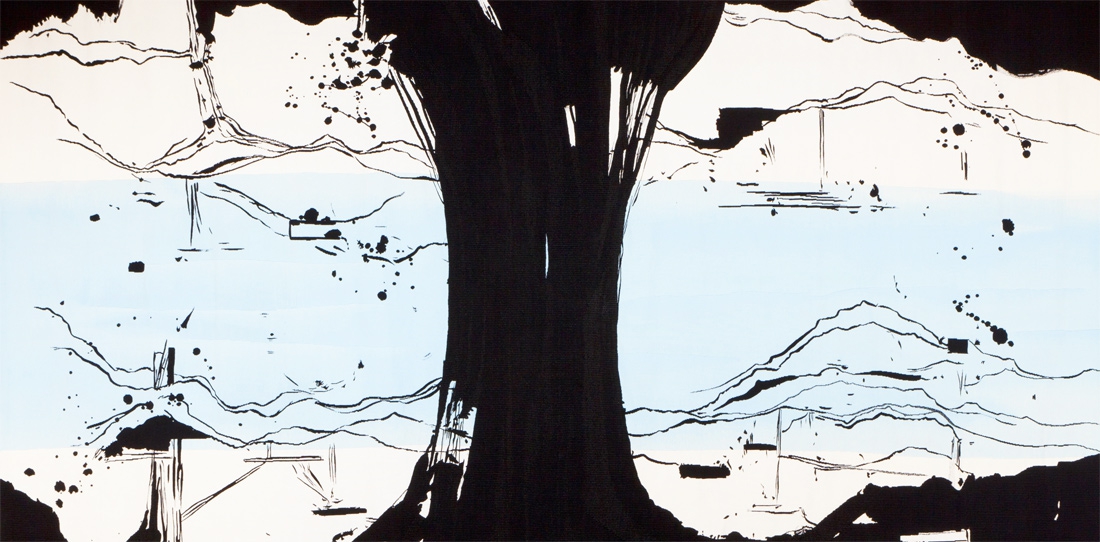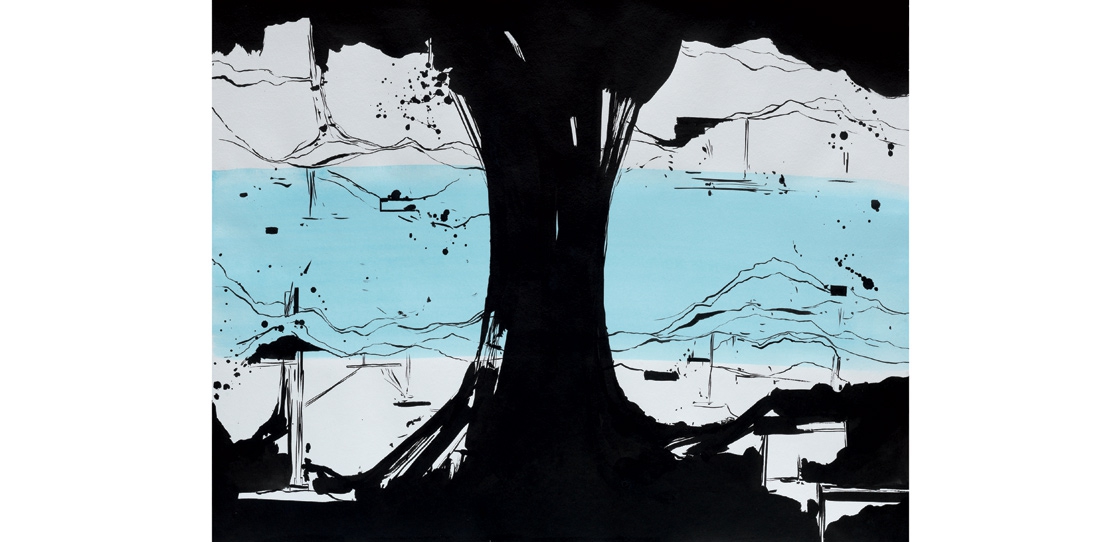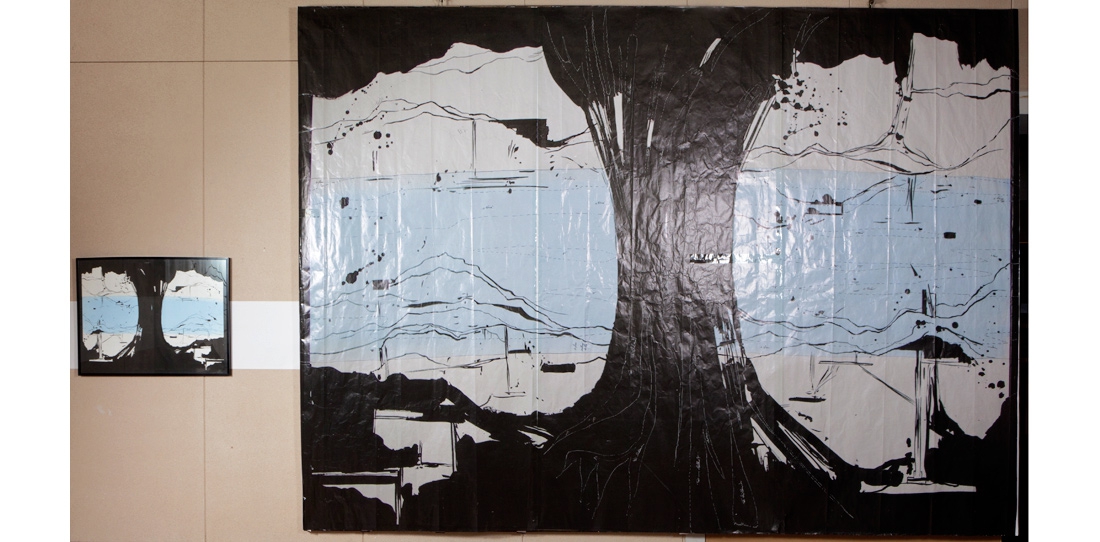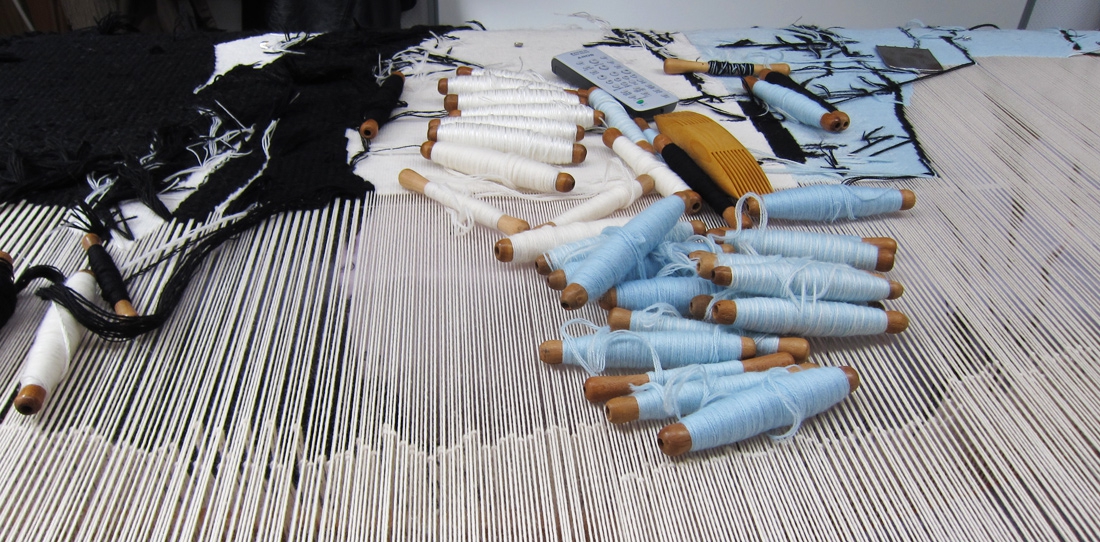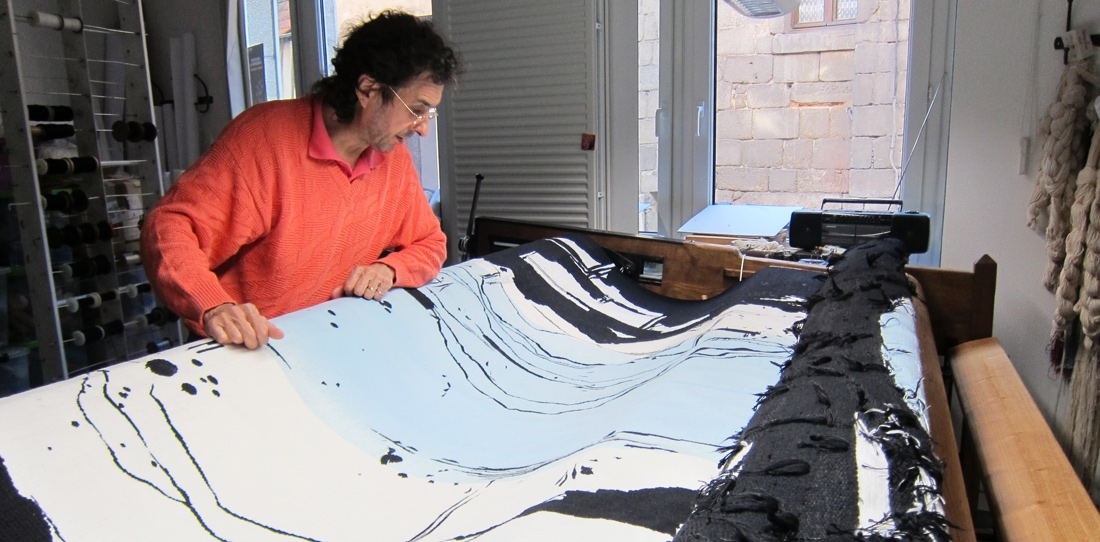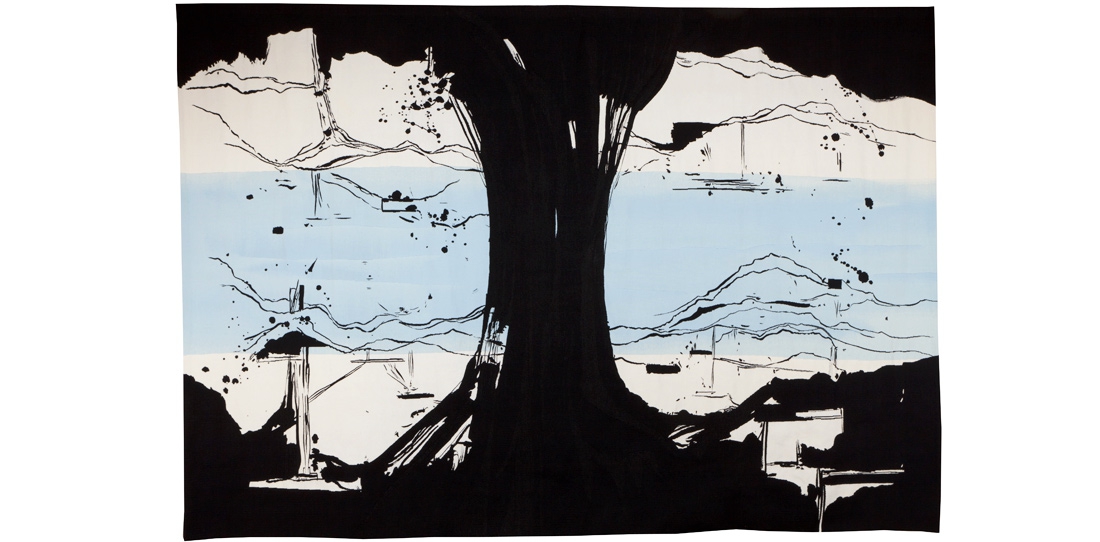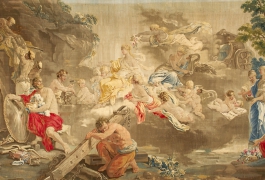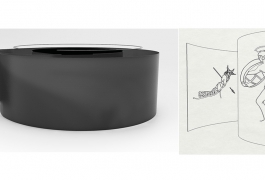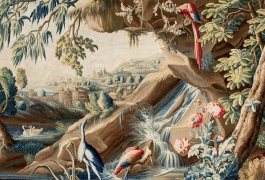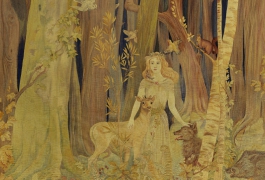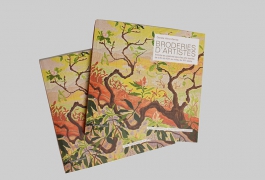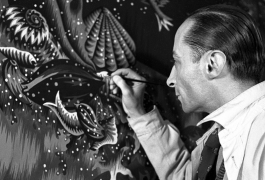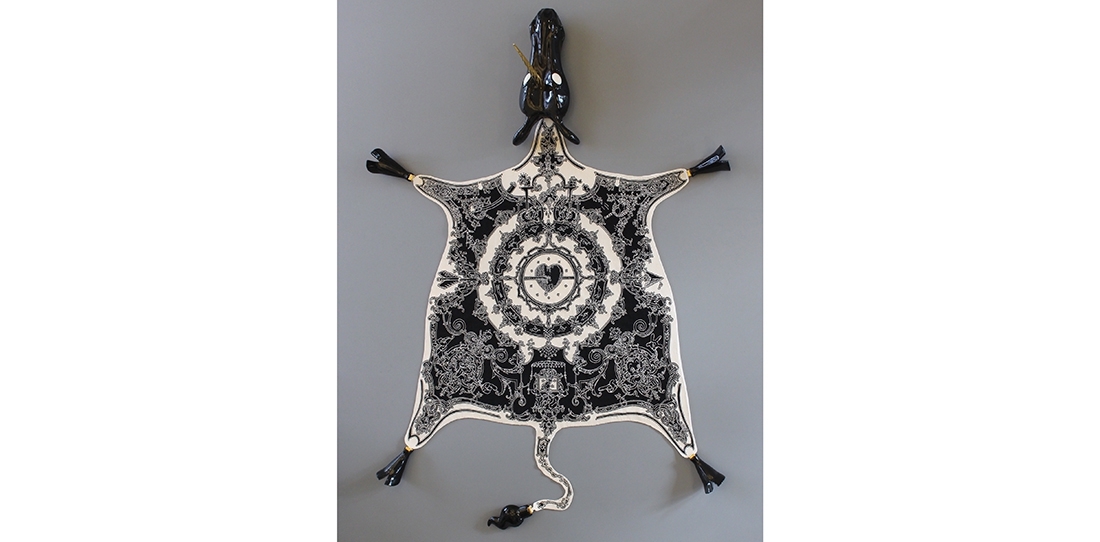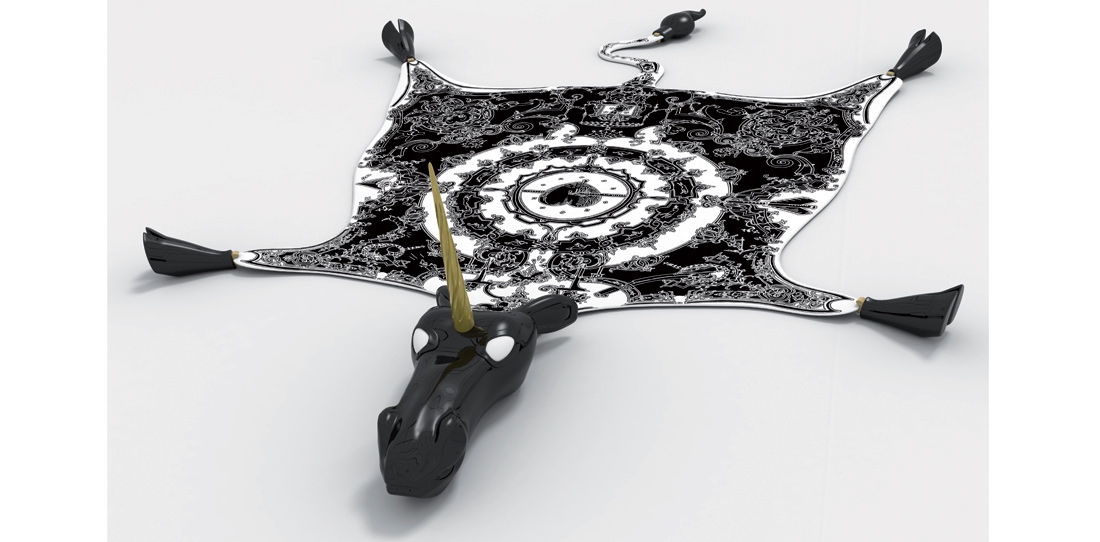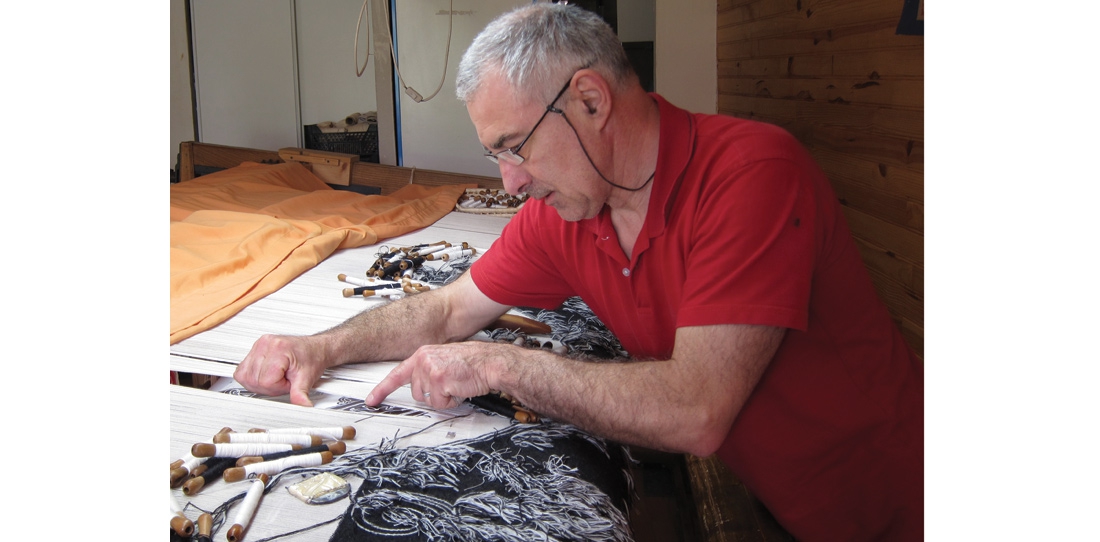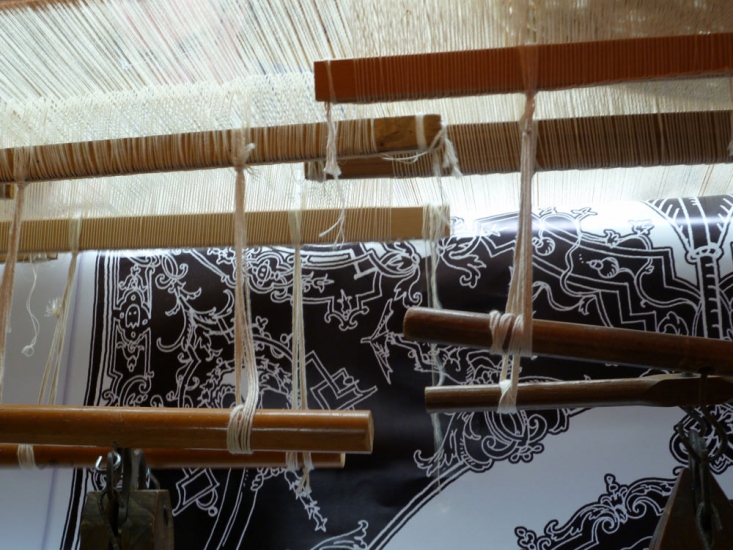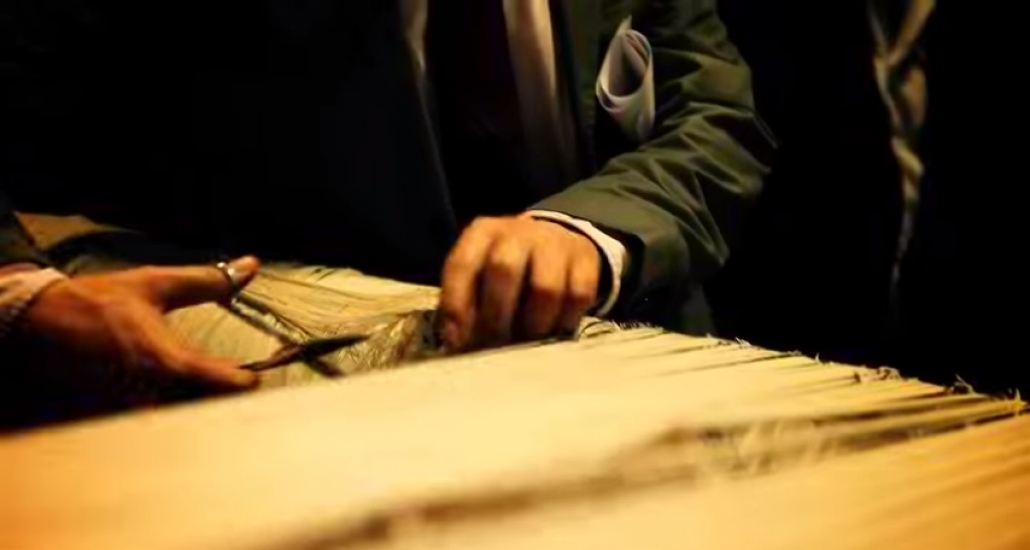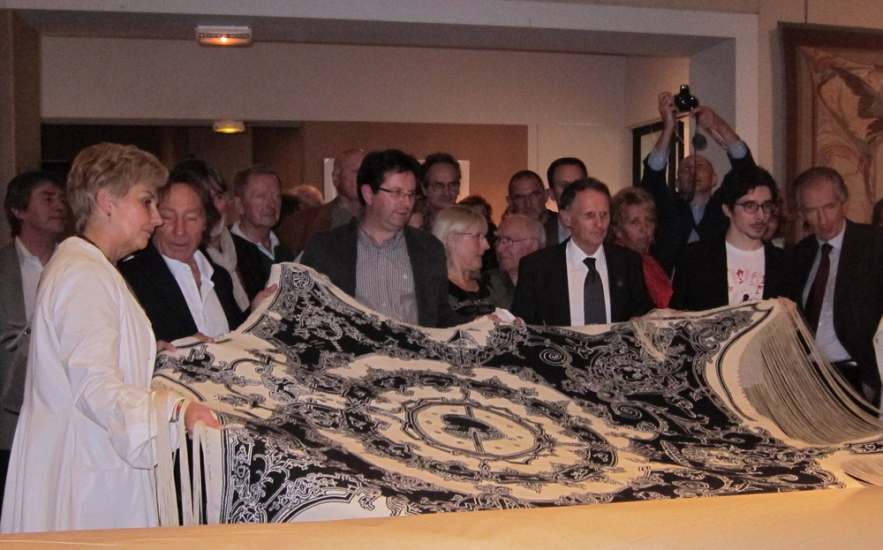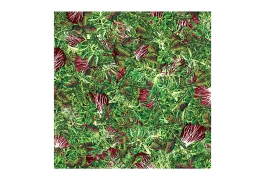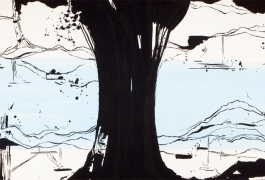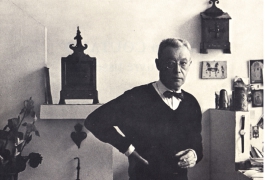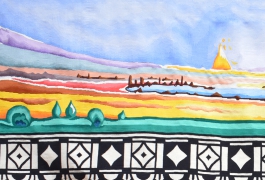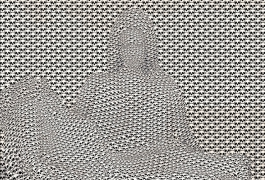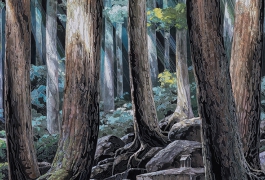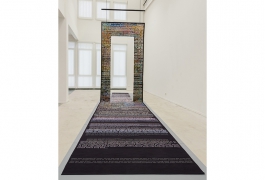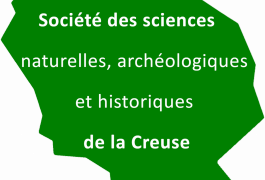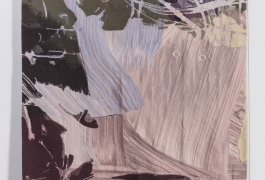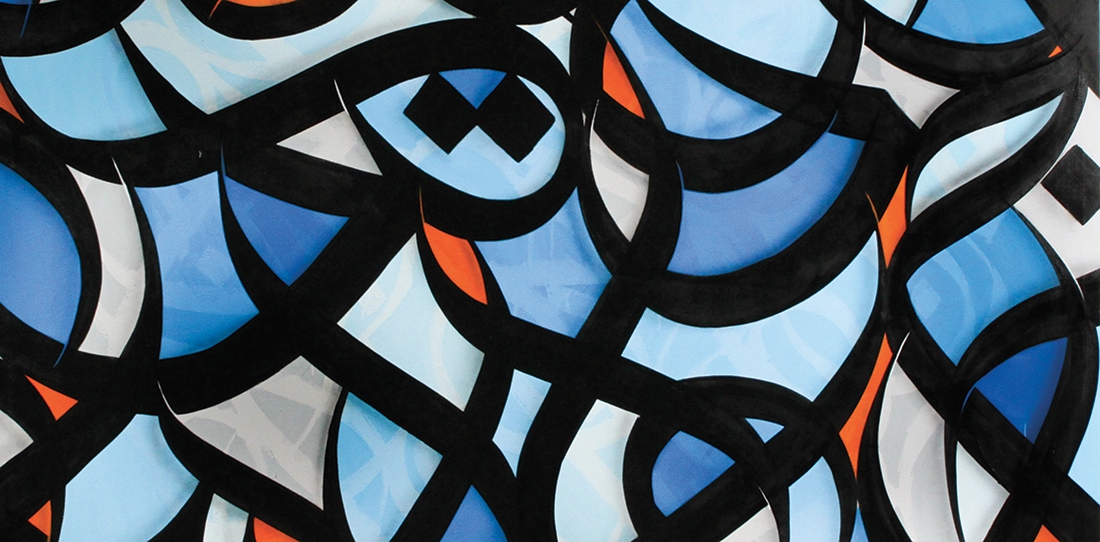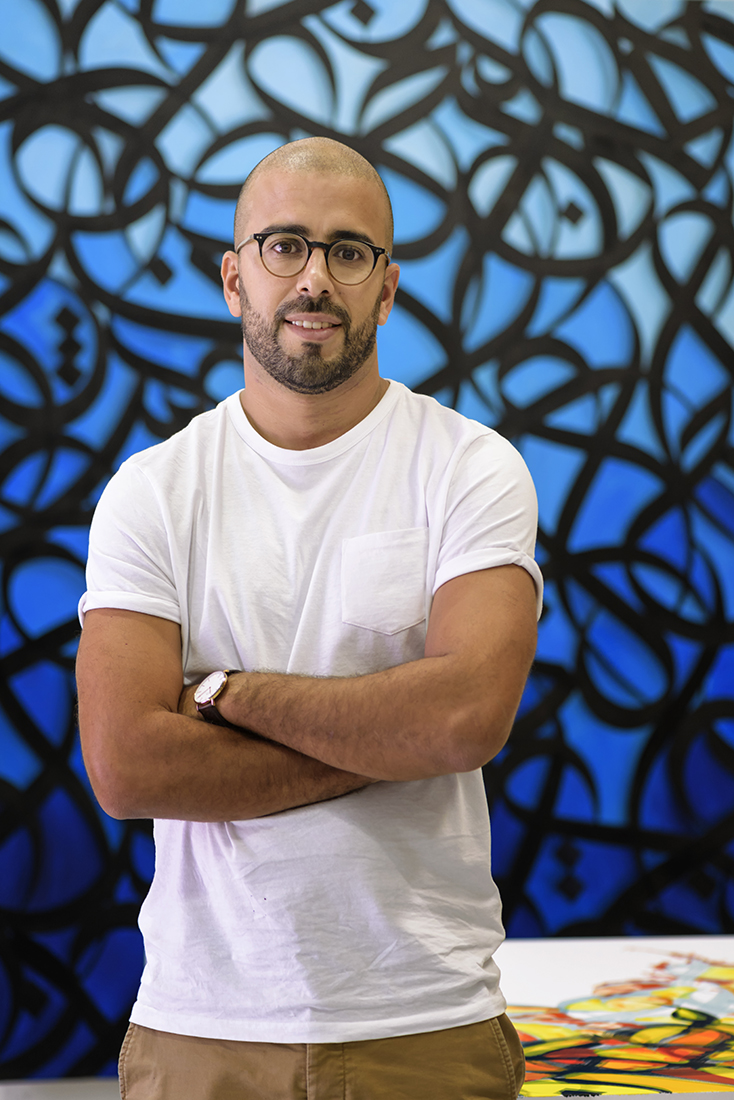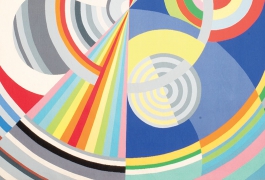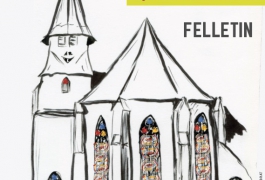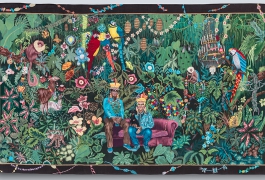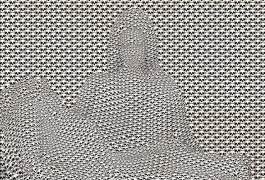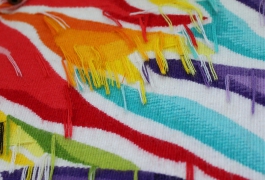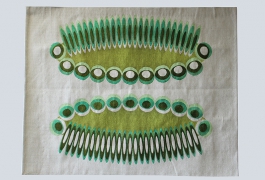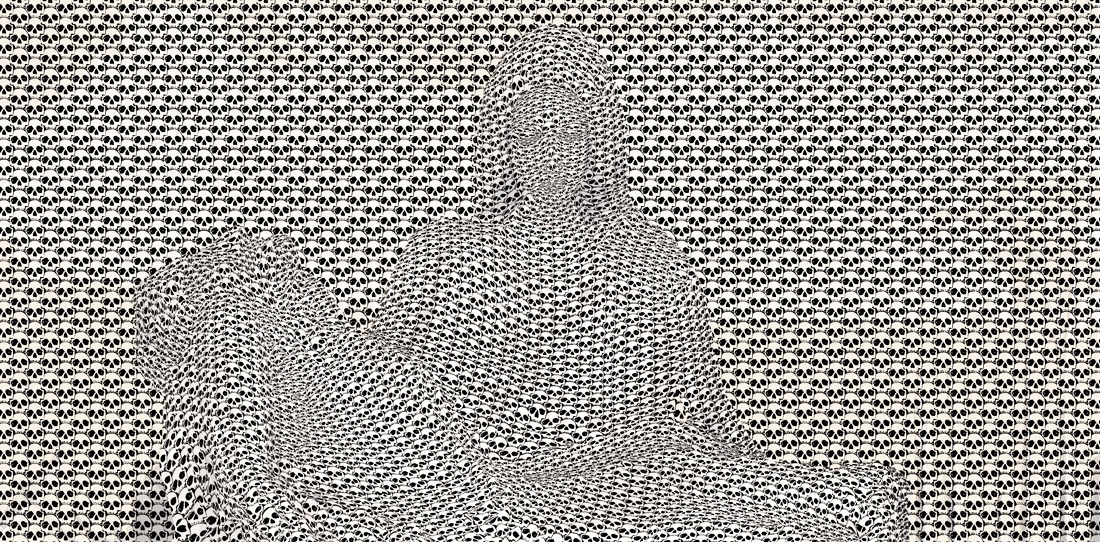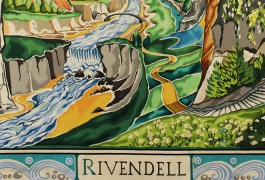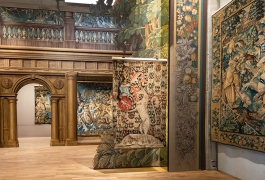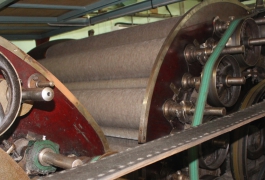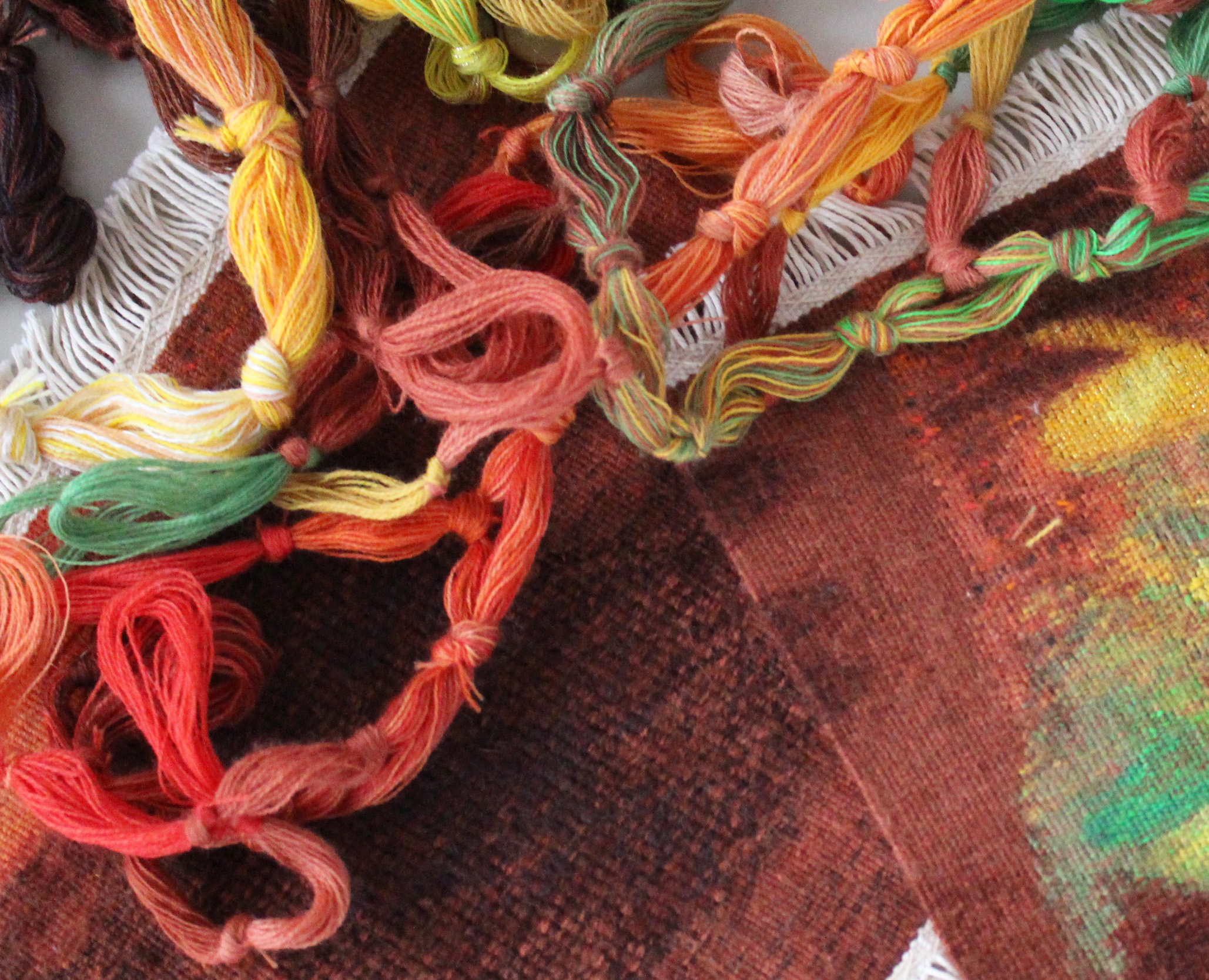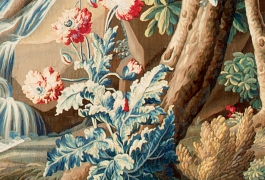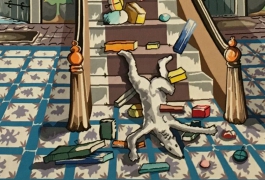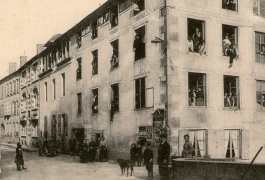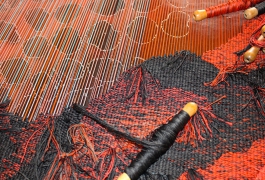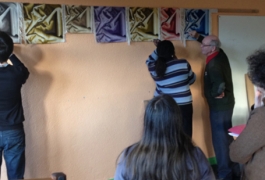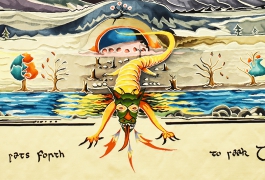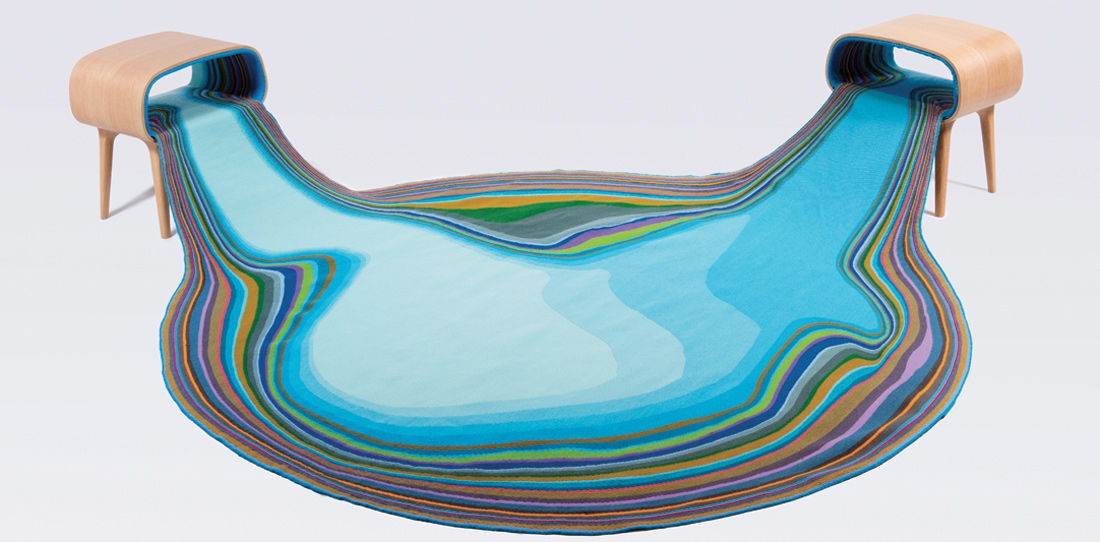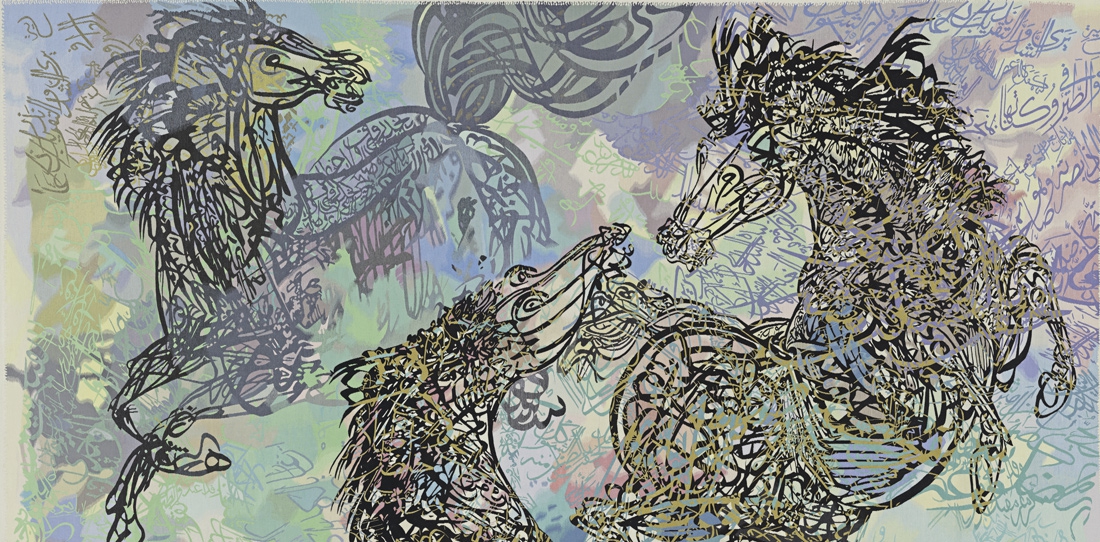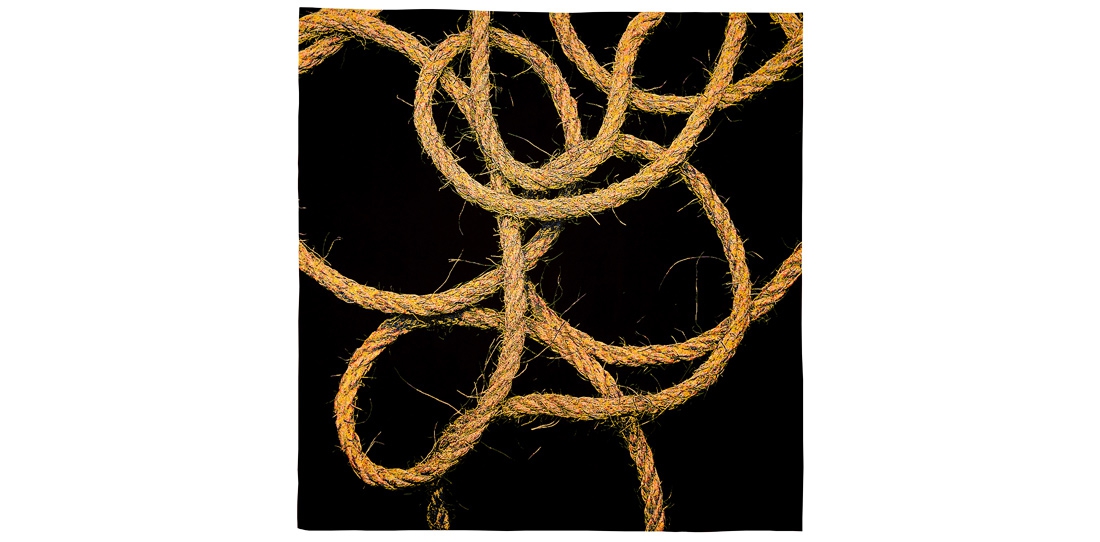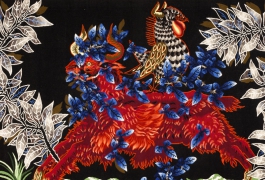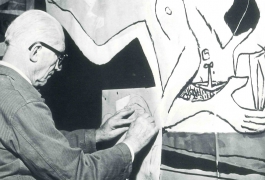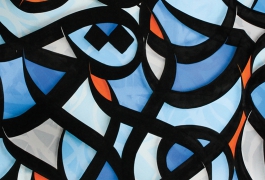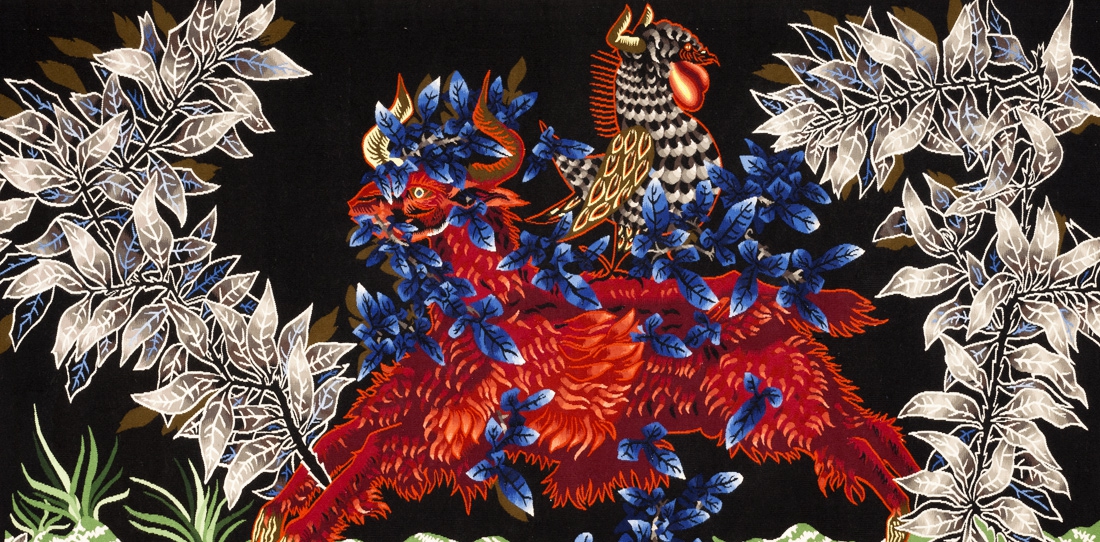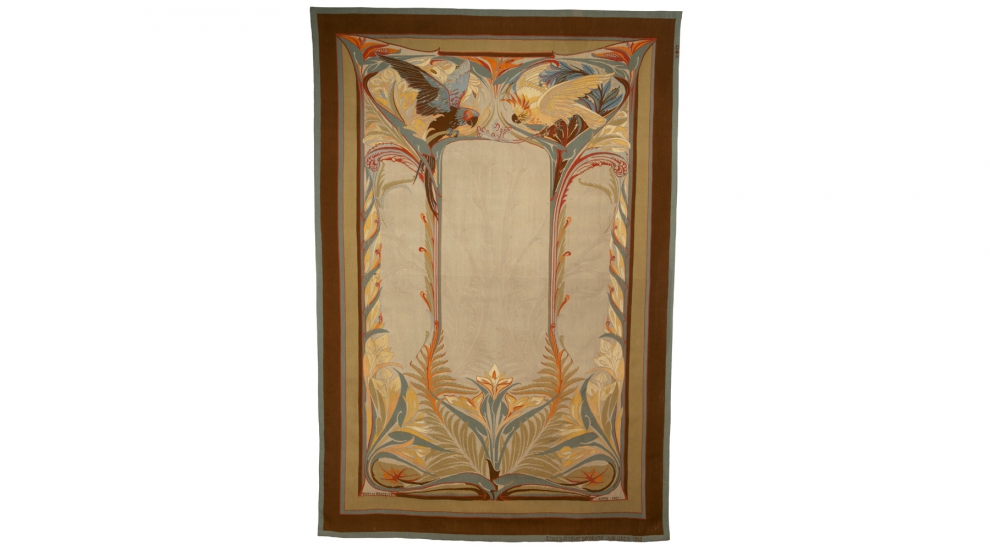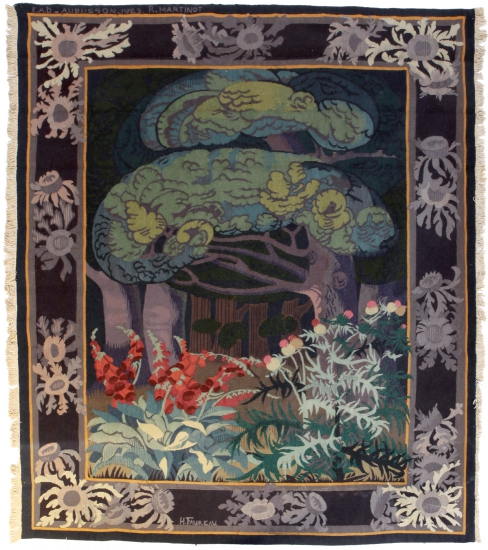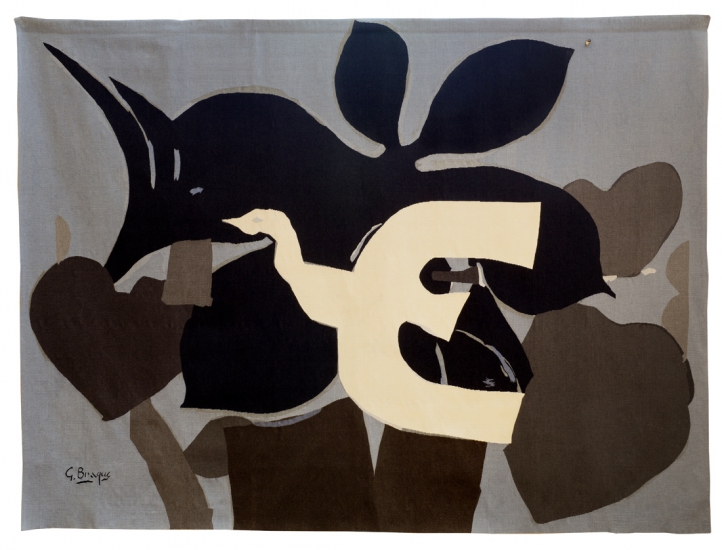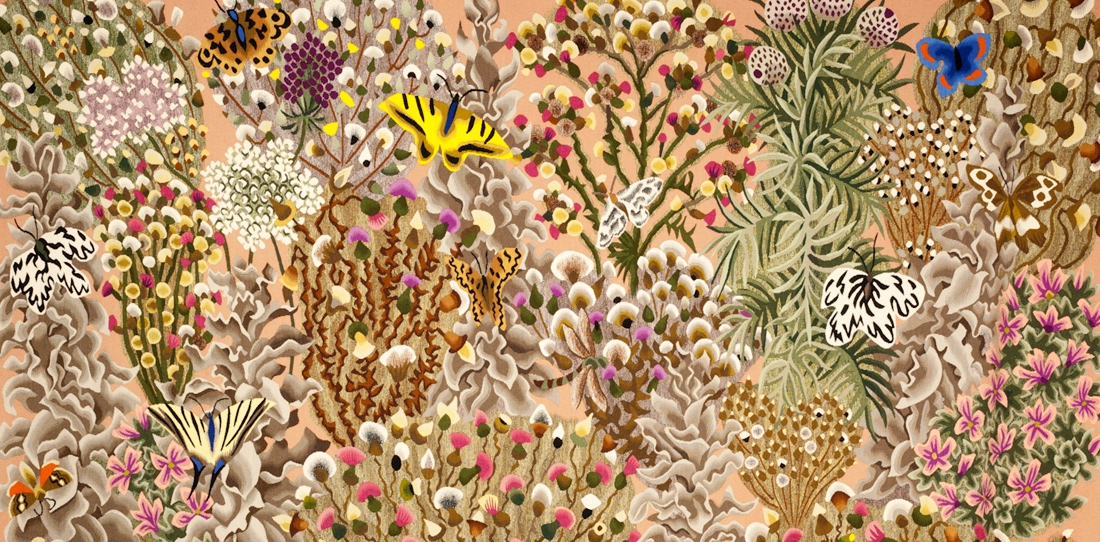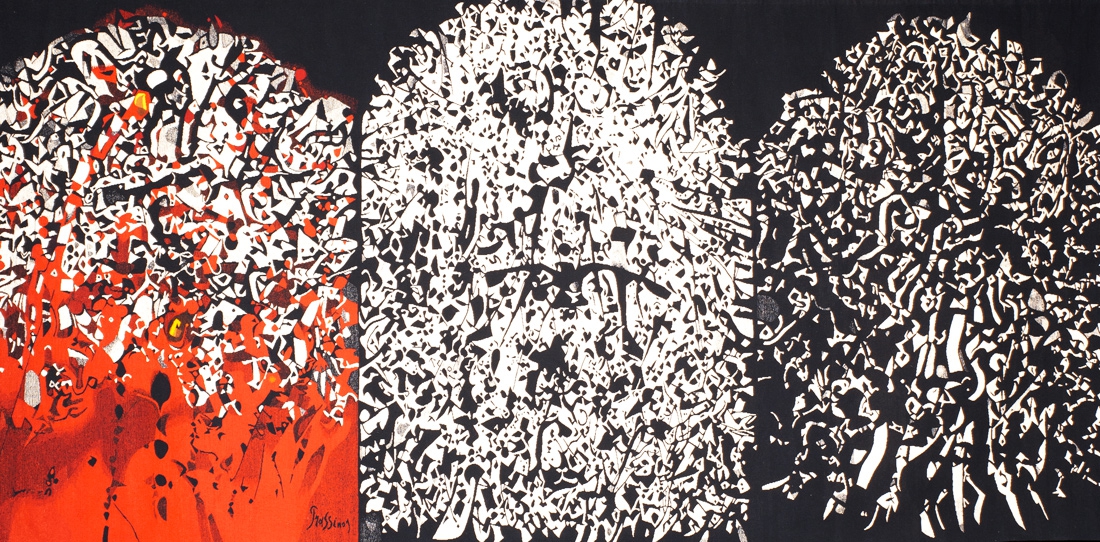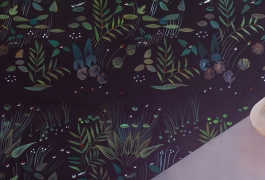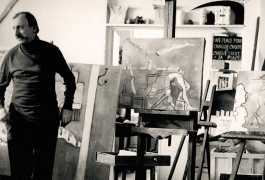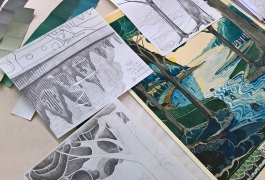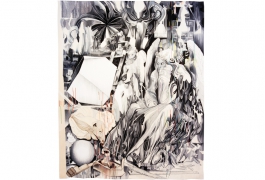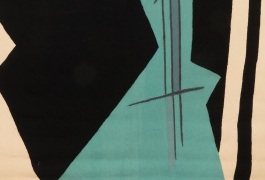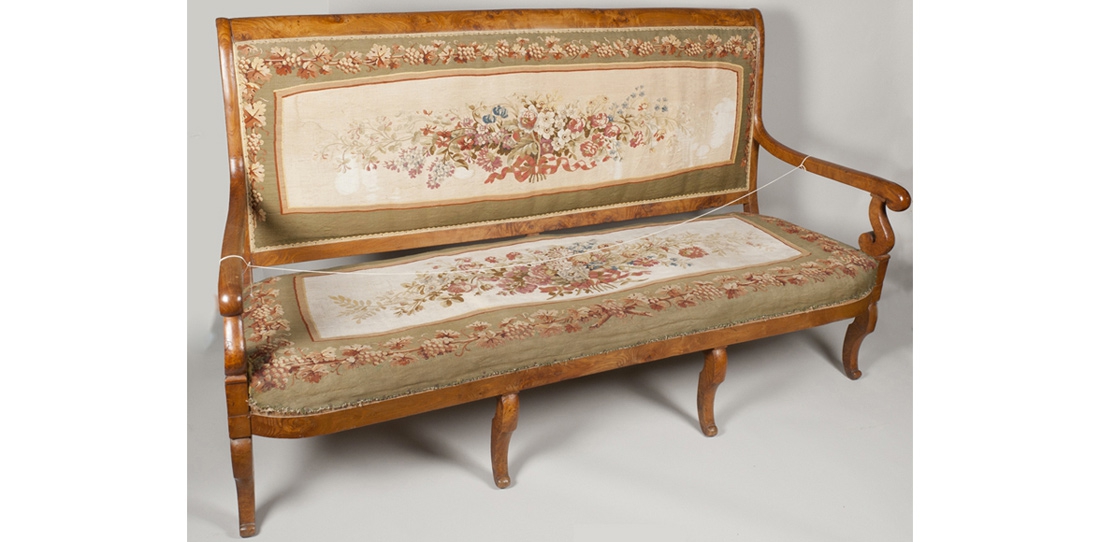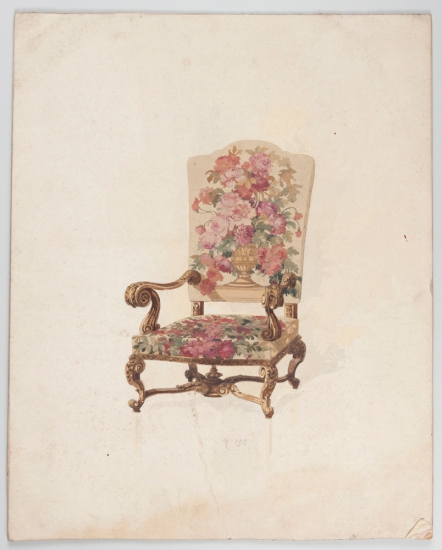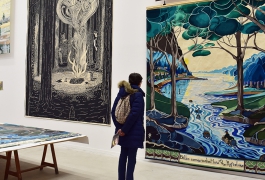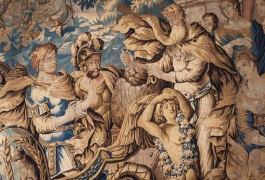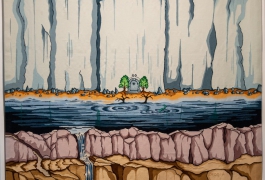La Rivière au bord de l’eau (The River by the waterside)
Olivier Nottelet, 3rd Prize – 2010 call for contemporary creation
Olivier Nottellet received the 3rd prize of the 2010 call for projects for La Rivière au bord de l’eau. The model was realized by the artist with Indian ink and blue gouache on paper (60 cm high x 80 cm large). The low-warp weaving (300 cm high x 400 cm large) was realized by Bernard Battu’s workshop in Aubusson.
Olivier Nottellet uses essentially the black and the white to work the visual impact of the form, to set graphic masses which stand out from the void. An atmosphere of discord is created. “It is actually the convolution, sometimes inextricable, which bounds memory, representation, evocation, retinal persistence, that is precisely this, which creates my activity” explains the artist.
His drawings are first and foremost created with Indian ink in classical format notebook, like a raw material thereafter enlarged, reworked. Playing with the lines and forms, Olivier Nottellet creates a fluid black material, some sort of a mass, which floats, rolls or sinks. This fluidity is particularly present in La Rivière au bord de l’eau by the aquatic atmosphere characterizing the model. The technical writing of the weaver allowed him to transcribe this universe into the tapestry: black masses were realized in triple warp thread to obtain a stronger weaving stitch, with an addition of fiberglass to the wool to emboss the design of this material, central in Nottellet’s work. A smart wink to the fantasy elements present in his works, which yet take reality as a starting point.
In his work, the artist breaks free from traditional distinctions: he is always located on the border between figuration and abstraction, between drawing and sculpture, between forms and materials. Playing with the codes of lyrical abstraction of the post-war period, he reuses the formal writings – reminding for example of George Matthieu or Pierre Soulages, abstraction master – and sorts out a figurative writing. The ambiguity between the full and the empty, the style and the content is strengthened by the contrast inducted by the color within this black and white flow.
Leaning on the immersive force of the tapestry medium and the fact that Olivier Nottellet’s work articulates drawings, objects and installations, the Cité internationale asked the artist to think of a specific space, which could welcome and highlight this work.
Discover
Peau de Licorne (Unicorn Skin)
Nicolas Buffe, Grand Prize - 2010 contemporary call for creation.
A first iconic Grand Prize
Grand prize of the 2010 call for project: Peau de licorne, of Nicolas Buffe (born in 1978). Collection Cité internationale de la tapisserie, Aubusson. The model was printed from a digital image (178 cm high x 127 cm large). The tapestry is realized with wool and silk by the Patrick Guillot workshop in Aubusson, the head, hoofs, and tail in Limoges porcelain enameled by the Centre de Recherche sur les Arts du Feu et de la Terre (CRAFT) in Limoges.
An iconoclastic style merging pop culture and scholar culture
His works are composed of decors borrowed from the mannerist ornament, baroque or rococo, blended with characters from comics or animation film.
“Assembling, pasting, mixing characters out of the pop culture and scholar culture, I proceed to the most eloquent possible associations, following my pleasure. This dialogue between past and present, which is deeply written within my work come under the entertainment.”
The artist draws with white chalk on a black background, his compositions invade the wall space. In 2008 at the Tokyo Contemporary Art Museum, he invested entirely an exhibition room with almost 200 m2 of finely drawn surface.
“As a child, in the 1980’s, the cultural atmosphere in which I bathed, was strongly influenced by the Japanese imagery of the mangas and video games on the one hand, and by the trace leaved by American animated cartoons. By using these elements, I am referring to a vocabulary, which has a very widely spread impact, even universal. I am not only into art history, but into animation history as well, so as comics and toys.”
Nicolas Buffe is constantly concerned with building and developing a new manner, which he puts to the test on very different mediums; architecture, objects, toys: “It is even more so exciting that the grotesques are twisting at leisure to adapt to whatever chosen form.”
Peau de licorne: kill a symbol to see it reborn.
“Working in Aubusson, it is putting the finger on the tapestry history in France and being part of this history as well, by kicking it (with all my due respect…) to have it penetrate my present and my pleasure.”
The celebrity of the two tapestry series of the Dame à la licorne (woven in the end of the 15th Century in the Flanders and conserved at the Cluny Museum in Paris) and the Chasse à la licorne (woven in 1500 in the Flanders and conserved at the Metropolitan Museum in New York), is such that the imaginary animal can be considered nowadays as tapestry emblematic.
“I conceived a project representing the unicorn’s corpse. In this somehow iconoclastic gesture of killing the symbol to regenerate it, I hope to print the mark of a new era full of stimulating creations for Aubusson, but for the French tapestry as well.”
In the late Middle Ages, the white unicorn, so as we know it today, appears in the bestiaries as a Christ symbol. Nicolas Buffe, by referring the five wounds of the Christ, integrates to his work the heart (as a target) pierced by the spear which killed the animal, so as Jesus on the cross. Like the series of the Chasse à la licorne tapestries, the dogs are numerous; they are represented here in the middle of a run, by referring the photographs of the bitch Maggie, taken in 1887 by Eadweard Muybridge (1830-1904) within the frame of its work on the photograph deconstruction of the movement.
Nicolas Buffe has graduated the École des Beaux-Arts in Paris. He lives and works in Tokyo.
----

